ReactiveCocoa 在设计上很大程度借鉴了 Reactive Extension 中的概念,可以说 ReactiveCocoa 是 Rx 在 Objective-C 语言中的实现。
在 Rx 中主要的两个概念_信号_和_序列_都在 ReactiveCocoa 中有着相对应的组件 RACSignal 和 RACSequence,上一篇文章已经对前者有一个简单的介绍,而这篇文章主要会介绍后者,也就是 RACSequence。
Push-Driven & Pull-Driven
虽然这篇文章主要介绍 RACSequence,但是在介绍它之前,笔者想先就推驱动(push-driven)和拉驱动(pull-driven)这两个概念做一点简单的说明。
RACSignal 和 RACSequence 都是 RACStream 的子类,它们不仅共享了来自父类的很多方法,也都表示数据流。
RACSignal 和 RACSequence 最大区别就是:
由于拉驱动在数据改变时,并不会主动推送给『订阅者』,所以往往适用于简化集合类对象等操作,相比于推驱动,它的适应场合较少。
图片中的内容来自 ReactiveCocoa · NSHipster 中。
预加载与延迟加载
在 RACSequence 中还涉及到另外一对概念,也就是预加载和延迟加载(也叫懒加载);如果你之前学习过 Lisp 这门编程语言,那么你一定知道 Lisp 中有两种列表,一种是正常的列表 List,另一种叫做流 Stream,这两者的主要区别就是流的加载是延迟加载的,只有在真正使用数据时才会计算数据的内容。
由于流是懒加载的,这也就是说它可以表示无穷长度的列表。
Stream 由两部分组成,分别是 head 和 tail,两者都是在访问时才会计算,在上图前者是一个数字,而后者会是另一个 Stream 或者 nil。
Objective-C
@interface RACSequence<__covariant ValueType> : RACStream <NSCoding, NSCopying, NSFastEnumeration>
@property (nonatomic, strong, readonly, nullable) ValueType head;@property (nonatomic, strong, readonly, nullable) RACSequence<ValueType> *tail;
@end
复制代码
RACSequence 头文件的中定义能够帮助我们更好理解递归的序列以及 head 和 tail 的概念,head 是一个值,tail 是一个 RACSequence 对象。
RACSequence 简介
了解了几个比较重要的概念之后,就可以进入正题了,先看一下在 ReactiveCocoa 中,RACSequence 都有哪些子类:
RACSequence 总共有九个子类,这篇文章不会覆盖其中所有的内容,只会简单介绍其中的几个;不过,我们先从父类 RACSequence 开始。
return 和 bind 方法
与介绍 RACSignal 时一样,这里我们先介绍两个 RACSequence 必须覆写的方法,第一个就是 +return:
Objective-C
+ (RACSequence *)return:(id)value { return [RACUnarySequence return:value];}
复制代码
+return: 方法用到了 RACSequence 的子类 RACUnarySequence 私有类,这个类在外界是不可见的,其实现非常简单,只是将原来的 value 包装成了一个简单的 RACUnarySequence 对象:
Objective-C
+ (RACUnarySequence *)return:(id)value { RACUnarySequence *sequence = [[self alloc] init]; sequence.head = value; return [sequence setNameWithFormat:@"+return: %@", RACDescription(value)];}
复制代码
这样在访问 head 时可以获取到传入的 value;在访问 tail 时只需要返回 nil:
Objective-C
- (RACSequence *)tail { return nil;}
复制代码
整个 RACUnarySequence 也只是对 value 简单封装成一个 RACSequence 对象而已:
相比于 +return: 方法的简单实现,-bind: 的实现就复杂多了:
Objective-C
- (RACSequence *)bind:(RACSequenceBindBlock (^)(void))block { RACSequenceBindBlock bindBlock = block(); return [[self bind:bindBlock passingThroughValuesFromSequence:nil] setNameWithFormat:@"[%@] -bind:", self.name];}
复制代码
首先是对 -bind: 方法进行一次转发,将控制权交给 -bind:passingThroughValuesFromSequence: 方法中:
Objective-C
- (RACSequence *)bind:(RACSequenceBindBlock)bindBlock passingThroughValuesFromSequence:(RACSequence *)passthroughSequence { __block RACSequence *valuesSeq = self; __block RACSequence *current = passthroughSequence; __block BOOL stop = NO;
RACSequence *sequence = [RACDynamicSequence sequenceWithLazyDependency:^ id { while (current.head == nil) { if (stop) return nil; id value = valuesSeq.head; if (value == nil) { stop = YES; return nil; } current = (id)bindBlock(value, &stop); if (current == nil) { stop = YES; return nil; }
valuesSeq = valuesSeq.tail; } return nil; } headBlock:^(id _) { return current.head; } tailBlock:^ id (id _) { if (stop) return nil;
return [valuesSeq bind:bindBlock passingThroughValuesFromSequence:current.tail]; }];
sequence.name = self.name; return sequence;}
复制代码
这个非常复杂的方法实际作用就是创建了一个私有类 RACDynamicSequence 对象,使用的初始化方法也都是私有的 +sequenceWithLazyDependency:headBlock:tailBlock::
Objective-C
+ (RACSequence *)sequenceWithLazyDependency:(id (^)(void))dependencyBlock headBlock:(id (^)(id dependency))headBlock tailBlock:(RACSequence *(^)(id dependency))tailBlock { RACDynamicSequence *seq = [[RACDynamicSequence alloc] init]; seq.headBlock = [headBlock copy]; seq.tailBlock = [tailBlock copy]; seq.dependencyBlock = [dependencyBlock copy]; seq.hasDependency = YES; return seq;}
复制代码
在使用 RACDynamicSequence 中的元素时,无论是 head 还是 tail 都会用到在初始化方法中传入的三个 block:
Objective-C
- (id)head { @synchronized (self) { id untypedHeadBlock = self.headBlock; if (untypedHeadBlock == nil) return _head;
if (self.hasDependency) { if (self.dependencyBlock != nil) { _dependency = self.dependencyBlock(); self.dependencyBlock = nil; }
id (^headBlock)(id) = untypedHeadBlock; _head = headBlock(_dependency); } else { id (^headBlock)(void) = untypedHeadBlock; _head = headBlock(); }
self.headBlock = nil; return _head; }}
复制代码
head 的计算依赖于 self.headBlock 和 self.dependencyBlock;
而 tail 的计算也依赖于 self.headBlock 和 self.dependencyBlock,只是 tail 会执行 tailBlock 返回另一个 RACDynamicSequence 的实例:
Objective-C
^ id (id _) { return [valuesSeq bind:bindBlock passingThroughValuesFromSequence:current.tail];}
复制代码
这里通过一段代码更好的了解 -bind: 方法是如何使用的:
Objective-C
RACSequence *sequence = [RACSequence sequenceWithHeadBlock:^id _Nullable{ return @1;} tailBlock:^RACSequence * _Nonnull{ return [RACSequence sequenceWithHeadBlock:^id _Nullable{ return @2; } tailBlock:^RACSequence * _Nonnull{ return [RACSequence return:@3]; }];}];RACSequence *bindSequence = [sequence bind:^RACSequenceBindBlock _Nonnull{ return ^(NSNumber *value, BOOL *stop) { NSLog(@"RACSequenceBindBlock: %@", value); value = @(value.integerValue * 2); return [RACSequence return:value]; };}];NSLog(@"sequence: head = (%@), tail=(%@)", sequence.head, sequence.tail);NSLog(@"BindSequence: head = (%@), tail=(%@)", bindSequence.head, bindSequence.tail);
复制代码
在上面的代码中,我们使用 +sequenceWithHeadBlock:tailBlock: 这个唯一暴露出来的初始化方法创建了一个如下图所示的 RACSequence:
图中展示了完整的 RACSequence 对象的值,其中的内容暂时都是 unresolved 的。
上述代码在运行之后,会打印出如下内容:
Objective-C
sequence: head = (1), tail=(<RACDynamicSequence: 0x60800009eb40>{ name = , head = (unresolved), tail = (unresolved) })RACSequenceBindBlock: 1BindSequence: head = (2), tail=(<RACDynamicSequence: 0x608000282940>{ name = , head = (unresolved), tail = (unresolved) })
复制代码
无论是 sequence 还是 bindSequence,其中的 tail 部分都是一个 RACDynamicSequence 对象,并且其中的 head 和 tail 部分都是 unresolved。
在上面的代码中 RACSequenceBindBlock 的执行也是惰性的,只有在获取 bindSequence.head 时,才会执行将数字转换成 RACUnarySequence 对象,最后通过 head 属性取出来。
lazySequence 和 eagerSequence
上一节的代码中展示的所有序列都是惰性的,而在整个 ReactiveCocoa 中,所有的 RACSequence 对象在默认情况下都是惰性的,序列中的值只有在真正需要使用时才会被展开,在其他时间都是 unresolved。
RACSequence 中定义了两个分别获取 lazySequence 和 eagerSequence 的属性:
Objective-C
@property (nonatomic, copy, readonly) RACSequence<ValueType> *eagerSequence;@property (nonatomic, copy, readonly) RACSequence<ValueType> *lazySequence;
复制代码
笔者一直认为在大多数情况下,在客户端上的惰性求值都是没有太多意义的,如果一个序列的长度没有达到比较庞大的数量级或者说计算量比较小,我们完全都可以使用贪婪求值(Eager Evaluation)的方式尽早获得结果;
同样,在数量级和计算量不需要考虑时,我们也不需要考虑是否应该设计成哪种求值方式,只需要使用默认行为。
与上一节相同,在这里使用相同的代码创建一个 RACSequence 对象:
Objective-C
RACSequence *sequence = [RACSequence sequenceWithHeadBlock:^id _Nullable{ return @1;} tailBlock:^RACSequence * _Nonnull{ return [RACSequence sequenceWithHeadBlock:^id _Nullable{ return @2; } tailBlock:^RACSequence * _Nonnull{ return [RACSequence return:@3]; }];}];
NSLog(@"Lazy: %@", sequence.lazySequence);NSLog(@"Eager: %@", sequence.eagerSequence);NSLog(@"Lazy: %@", sequence.lazySequence);
复制代码
然后分别三次打印出当前对象的 lazySequence 和 eagerSequence 中的值:
Objective-C
Lazy: <RACDynamicSequence: 0x608000097160>{ name = , head = (unresolved), tail = (unresolved) }Eager: <RACEagerSequence: 0x600000035de0>{ name = , array = ( 1, 2, 3) }Lazy: <RACDynamicSequence: 0x608000097160>{ name = , head = 1, tail = <RACDynamicSequence: 0x600000097070> { name = , head = 2, tail = <RACUnarySequence: 0x600000035f00> { name = , head = 3 } } }
复制代码
在第一调用 sequence.lazySequence 时,因为元素没有被使用,惰性序列的 head 和 tail 都为 unresolved;而在 sequence.eagerSequence 调用后,访问了序列中的所有元素,在这之后再打印 sequence.lazySequence 中的值就都不是 unresolved 的了。
这种情况的出现不难理解,不过因为 lazySequence 和 eagerSequence 是 RACSequence 的方法,所以我们可以在任意子类的实例包括 RACEagerSequence 和非惰性序列上调用它们,这就会出现以下的多种情况:
总而言之,调用过 eagerSequence 的序列的元素已经不再是 unresolved 了,哪怕再调用 lazySequence 方法,读者可以自行实验验证这里的结论。
操作 RACSequence
RACStream 为 RACSequence 提供了很多基本的操作,-map:、-filter:、-ignore: 等等,因为这些方法的实现都基于 -bind:,而 -bind: 方法的执行是惰性的,所以在调用上述方法之后返回的 RACSequence 中所有的元素都是 unresolved 的,需要在访问之后才会计算并展开:
Objective-C
RACSequence *sequence = [@[@1, @2, @3].rac_sequence map:^id _Nullable(NSNumber * _Nullable value) { return @(value.integerValue * value.integerValue);}];NSLog(@"%@", sequence); -> <RACDynamicSequence: 0x60800009ad10>{ name = , head = (unresolved), tail = (unresolved) }NSLog(@"%@", sequence.eagerSequence); -> <RACEagerSequence: 0x60800002bfc0>{ name = , array = (1, 4, 9) }
复制代码
除了从 RACStream 中继承的一些方法,在 RACSequence 类中也有一些自己实现的方法,比如说 -foldLeftWithStart:reduce: 方法:
Objective-C
- (id)foldLeftWithStart:(id)start reduce:(id (^)(id, id))reduce { if (self.head == nil) return start;
for (id value in self) { start = reduce(start, value); }
return start;}
复制代码
使用简单的 for 循环,将序列中的数据进行『折叠』,最后返回一个结果:
Objective-C
RACSequence *sequence = @[@1, @2, @3].rac_sequence;NSNumber *sum = [sequence foldLeftWithStart:0 reduce:^id _Nullable(NSNumber * _Nullable accumulator, NSNumber * _Nullable value) { return @(accumulator.integerValue + value.integerValue);}];NSLog(@"%@", sum);
复制代码
与上面方法相似的是 -foldRightWithStart:reduce: 方法,从右侧开始向左折叠整个序列,虽然过程有一些不同,但是结果还是一样的。
从两次方法的调用栈上来看,就能看出两者实现过程的明显区别:
在源代码中,你也可以看到方法在创建 RACSequence 的 block 中递归调用了当前的方法:
Objective-C
- (id)foldRightWithStart:(id)start reduce:(id (^)(id, RACSequence *))reduce { if (self.head == nil) return start;
RACSequence *rest = [RACSequence sequenceWithHeadBlock:^{ if (self.tail) { return [self.tail foldRightWithStart:start reduce:reduce]; } else { return start; } } tailBlock:nil];
return reduce(self.head, rest);}
复制代码
RACSequence 与 RACSignal
虽然 RACSequence 与 RACSignal 有很多不同,但是在 ReactiveCocoa 中 RACSequence 与 RACSignal 却可以双向转换。
将 RACSequence 转换成 RACSignal
将 RACSequence 转换成 RACSignal 对象只需要调用一个方法。
分析其实现之前先看一下如何使用 -signal 方法将 RACSequence 转换成 RACSignal 对象的:
Objective-C
RACSequence *sequence = @[@1, @2, @3].rac_sequence;RACSignal *signal = sequence.signal;[signal subscribeNext:^(id _Nullable x) { NSLog(@"%@", x);}];
复制代码
其实过程非常简单,原序列 @[@1, @2, @3] 中的元素会按照次序发送,可以理解为依次调用 -sendNext:,它可以等价于下面的代码:
Objective-C
RACSignal *signal = [RACSignal createSignal:^RACDisposable * _Nullable(id<RACSubscriber> _Nonnull subscriber) { [subscriber sendNext:@1]; [subscriber sendNext:@2]; [subscriber sendNext:@3]; [subscriber sendCompleted]; return nil;}];[signal subscribeNext:^(id _Nullable x) { NSLog(@"%@", x);}];
复制代码
-signal 方法的实现依赖于另一个实例方法 -signalWithScheduler:,它会在一个 RACScheduler 对象上发送序列中的所有元素:
Objective-C
- (RACSignal *)signal { return [[self signalWithScheduler:[RACScheduler scheduler]] setNameWithFormat:@"[%@] -signal", self.name];}
- (RACSignal *)signalWithScheduler:(RACScheduler *)scheduler { return [[RACSignal createSignal:^(id<RACSubscriber> subscriber) { __block RACSequence *sequence = self;
return [scheduler scheduleRecursiveBlock:^(void (^reschedule)(void)) { if (sequence.head == nil) { [subscriber sendCompleted]; return; } [subscriber sendNext:sequence.head]; sequence = sequence.tail; reschedule(); }]; }] setNameWithFormat:@"[%@] -signalWithScheduler: %@", self.name, scheduler];}
复制代码
RACScheduler 并不是这篇文章准备介绍的内容,这里的代码其实相当于递归调用了 reschedule block,不断向 subscriber 发送 -sendNext:,直到 RACSequence 为空为止。
将 RACSignal 转换成 RACSequence
反向转换 RACSignal 的过程相比之下就稍微复杂一点了,我们需要连续调用两个方法,才能将它转换成 RACSequence。
通过一段代码来看转换过程是如何进行的:
Objective-C
RACSignal *signal = [RACSignal createSignal:^RACDisposable * _Nullable(id<RACSubscriber> _Nonnull subscriber) { [subscriber sendNext:@1]; [subscriber sendNext:@2]; [subscriber sendNext:@3]; [subscriber sendCompleted]; return nil;}];NSLog(@"%@", signal.toArray.rac_sequence);
复制代码
运行上面的代码,会得到一个如下的 RACArraySequence 对象:
Objective-C
<RACArraySequence: 0x608000024e80>{ name = , array = ( 1, 2, 3) }
复制代码
在这里不想过多介绍其实现原理,我们只需要知道这里使用了 RACStream 提供的操作『收集』了信号发送过程中的发送的所有对象 @1、@2、@3 就可以了。
总结
相比于 RACSignal 来说,虽然 RACSequence 有很多的子类,但是它的用途和实现复杂度都少很多,这主要是因为它是 Pull-Driven 的,只有在使用时才会更新,所以我们一般只会使用 RACSequence 操作数据流,使用 map、filter、flattenMap 等方法快速操作数据。
References
Github Repo:iOS-Source-Code-Analyze
Source: https://draveness.me/racsignal
本文转载自 Draveness 技术博客。
原文链接:https://draveness.me/racsequence


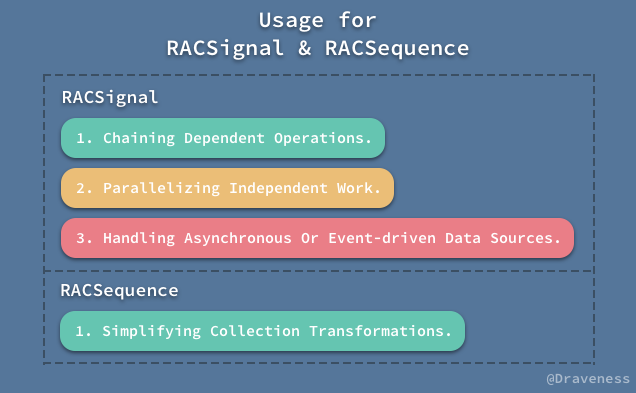
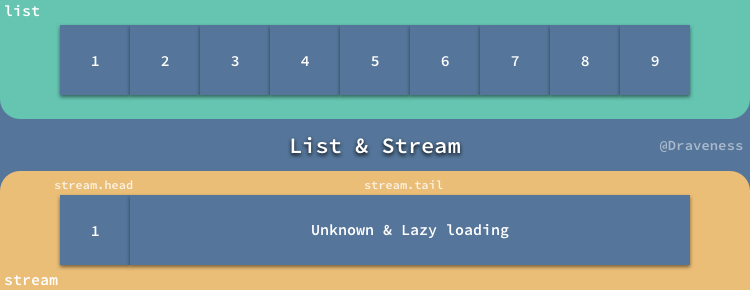
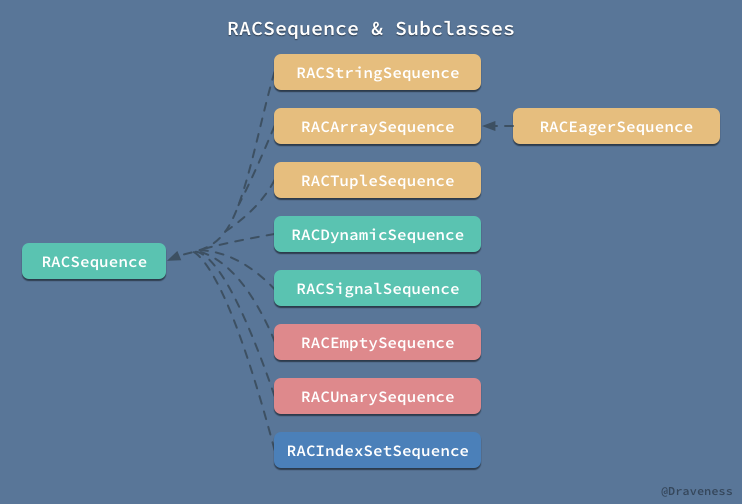
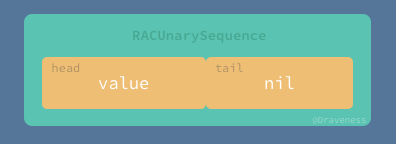
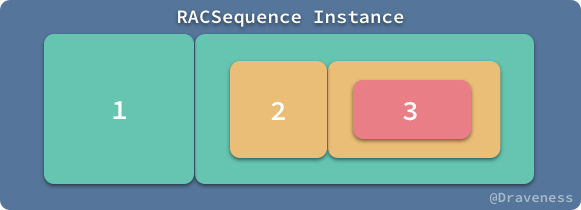
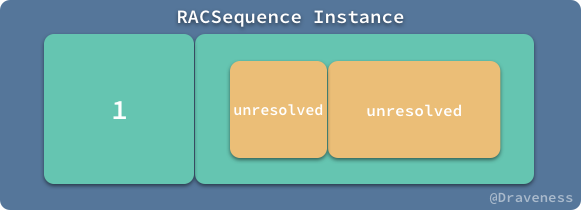
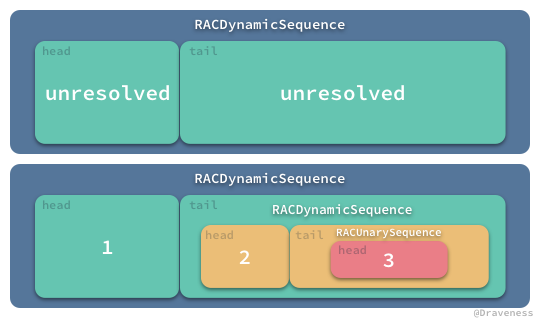


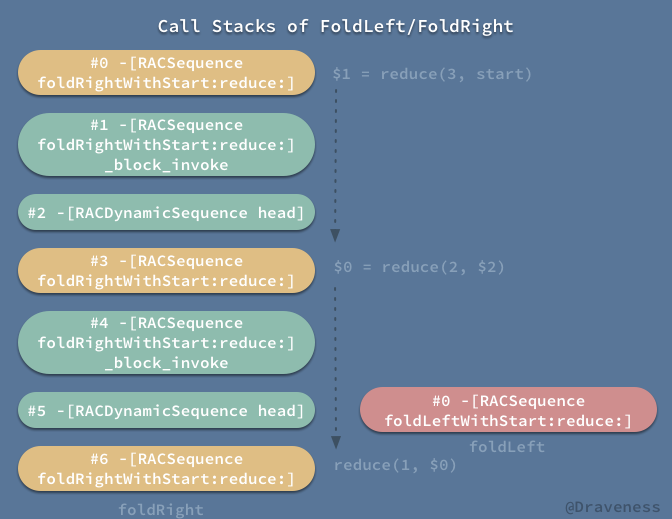
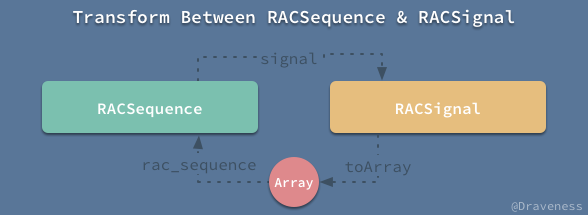




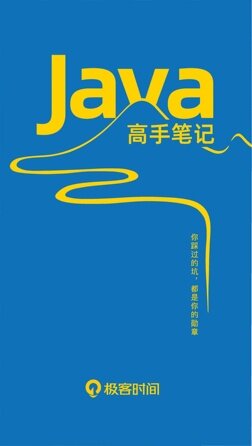










评论